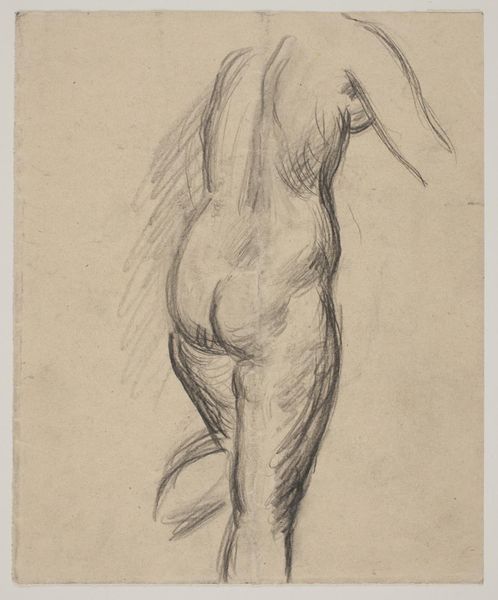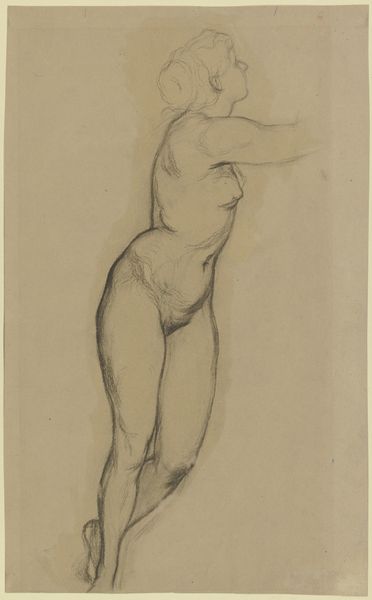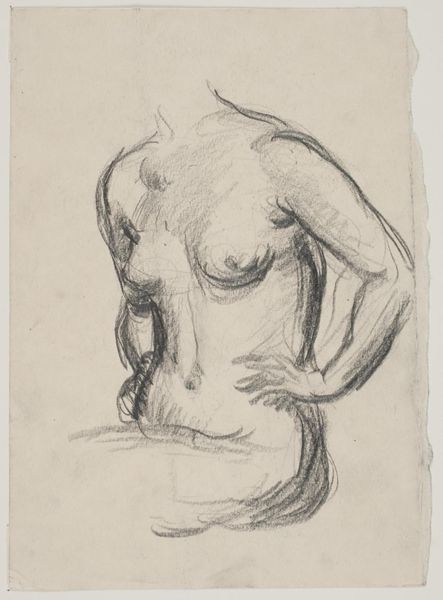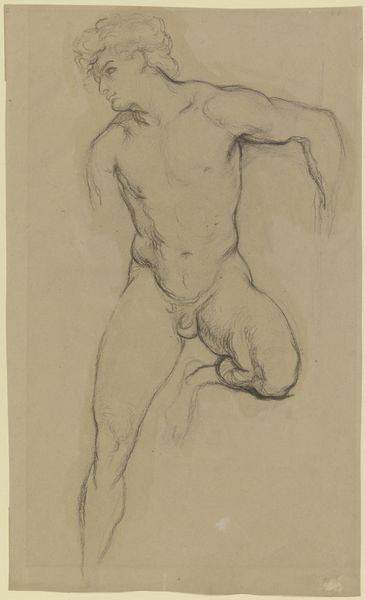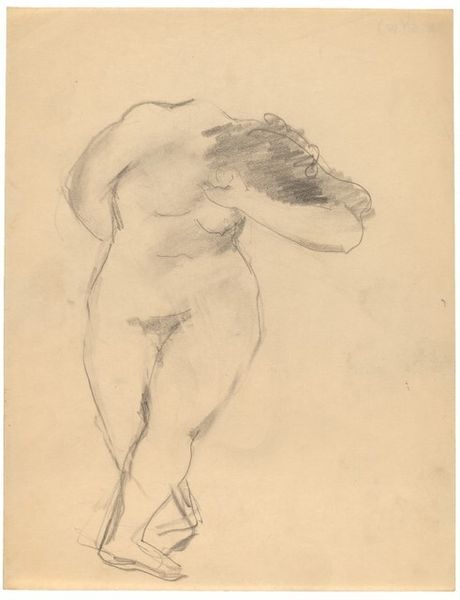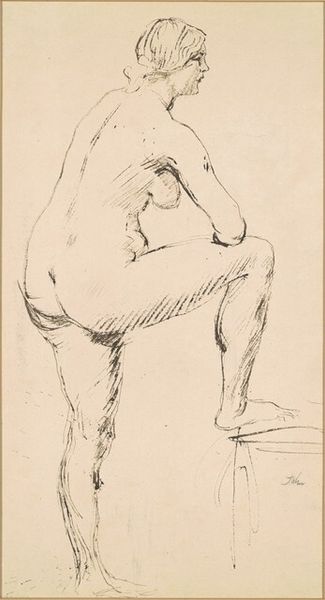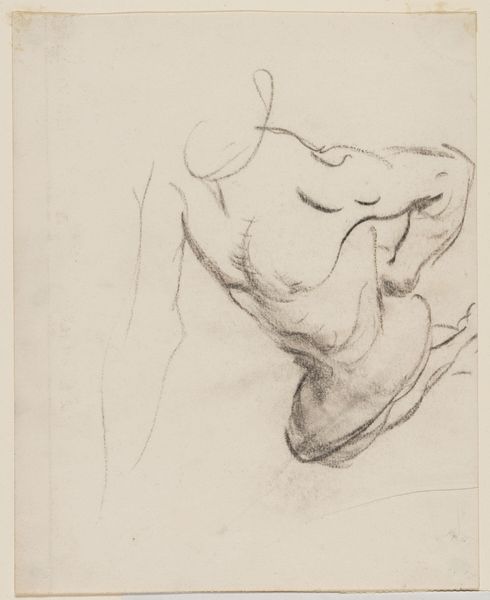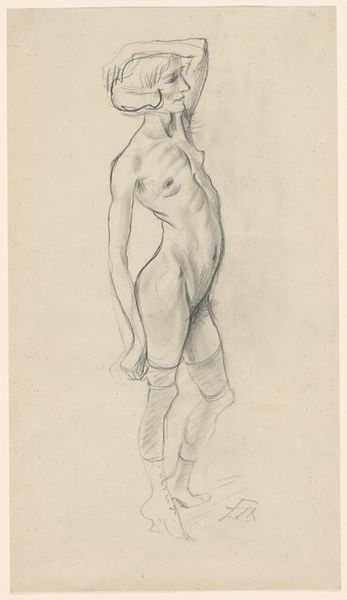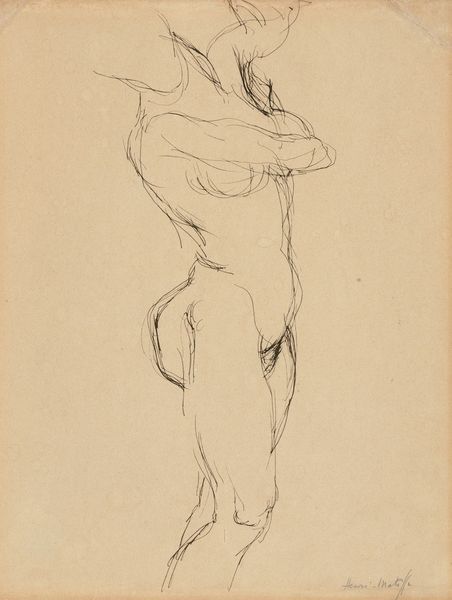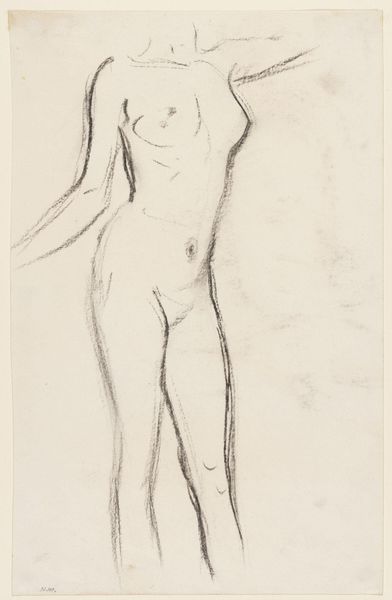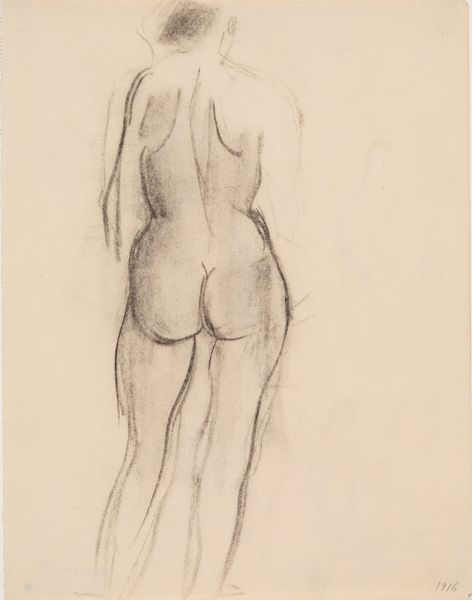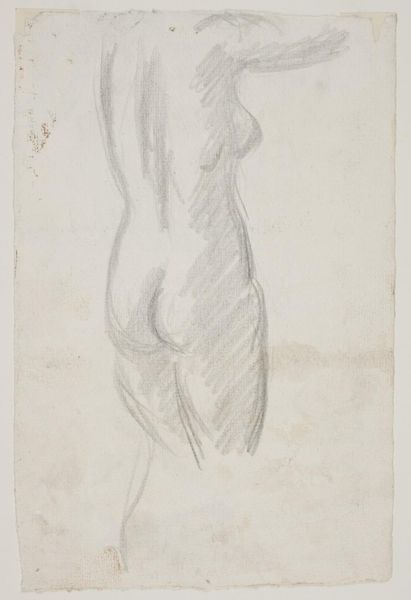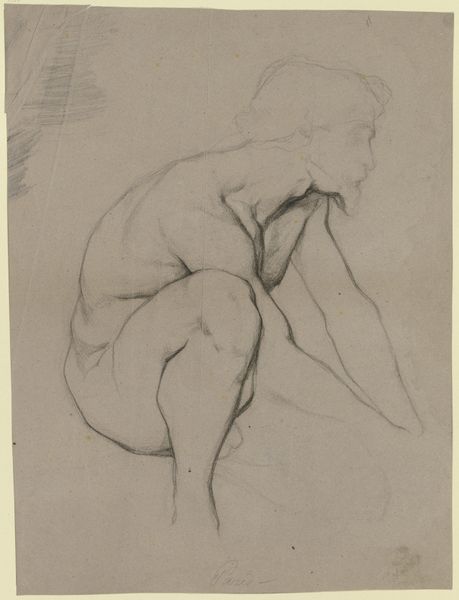
Dimensions: 340 mm (height) x 252 mm (width) (bladmaal)
Curator: This drawing is titled "To kvindelige modeller" by Vilhelm Lundstrom, created between 1918 and 1921. It's rendered in pencil. What's your initial take on it? Editor: Well, first impression: It's wonderfully raw. I'm immediately drawn to the dynamic interplay of light and shadow, created by simple, yet assured lines. There’s a clear tension between form and the apparent spontaneity. Curator: Absolutely. Lundstrom was deeply engaged with the formal possibilities of line and the materiality of the pencil medium. Notice the strategic use of hatching to suggest volume. He manages to imbue these figures with a tangible weight. Editor: I’m curious about these figures in a broader cultural context. At that time, after World War I, depictions of women, particularly the nude form, served both progressive and traditional functions. This wasn’t just about aesthetics. Curator: Precisely. His commitment to formal experimentation led him away from strict naturalism, so we must be cautious in interpreting it through that lens. The flattening of space pushes the viewer to contemplate the forms as objects themselves. Editor: But how can we separate form from meaning entirely? These are real bodies presented in a certain way, which surely reflected or contested prevailing notions of the female form in art at the time. Think of the societal constraints, or lack thereof, faced by women artists and models. Curator: It is in considering it formally. How lines come together on this composition gives meaning. His reduction to essential forms isn't about denying content, but elevating visuality as content itself. Consider the expressive potential he coaxes from each deliberate mark. Editor: Right. And seeing it hung within the Statens Museum for Kunst now, we're placing it within a continuing, evolving dialogue. A conversation about the history and interpretation of the female body in art. Curator: Indeed. This focused vision certainly opens up questions around how we perceive and define form. Editor: I agree, and seeing it placed within the cultural history helps in contextualizing. Thank you for bringing light to Lundstrom’s work today.
Comments
No comments
Be the first to comment and join the conversation on the ultimate creative platform.
